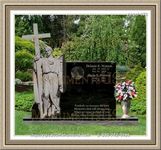|
Designing A Memorial Service And Saying Goodbye
When a loved one dies, the funeral ceremony offers a formal way of saying goodbye. These services can often be personalized in order to reflect the individual's life. You can find help through the personnel at the mortuary who prepare the body.
Music is often an important part of services. You may choose someone to sing or play an instrument live. The use of prerecorded music has become very common in many areas. In addition, the mortuary may have an organist on staff.
Most services include an officiant or eulogist. In the past, it was common for a member of the clergy to fill this role; however, today there is more freedom in who will lead the service. The family generally communicates directly with those responsible for conducting the service. Some religious groups provide more direction in the manner of conducting the services than others. If you want a religious service, but are unsure who you should contact, the mortuary staff can provide assistance.
Often the individual may have been a part of a fraternal organization or served in the military. Such groups may be invited to take part in the service. Some have specific types of services, specific to their organizations. Veterans groups may offer the final playing of taps, salute to the deceased (21 gun), and present a flag to the family.
Families can also determine if they want to have a viewing as a part of the service. One option that is becoming more popular is the memorial service, in which the body is already cremated or buried and not at the service. However, these are personal decisions for the family.
Saying goodbye to a loved one who has passed is often difficult emotionally, but, for many, an important part of the grieving process. Plans for a funeral ceremony should be discussed before the loved one passes if possible. This allows you to plan a service you know your loved one would have approved.
|
|



























